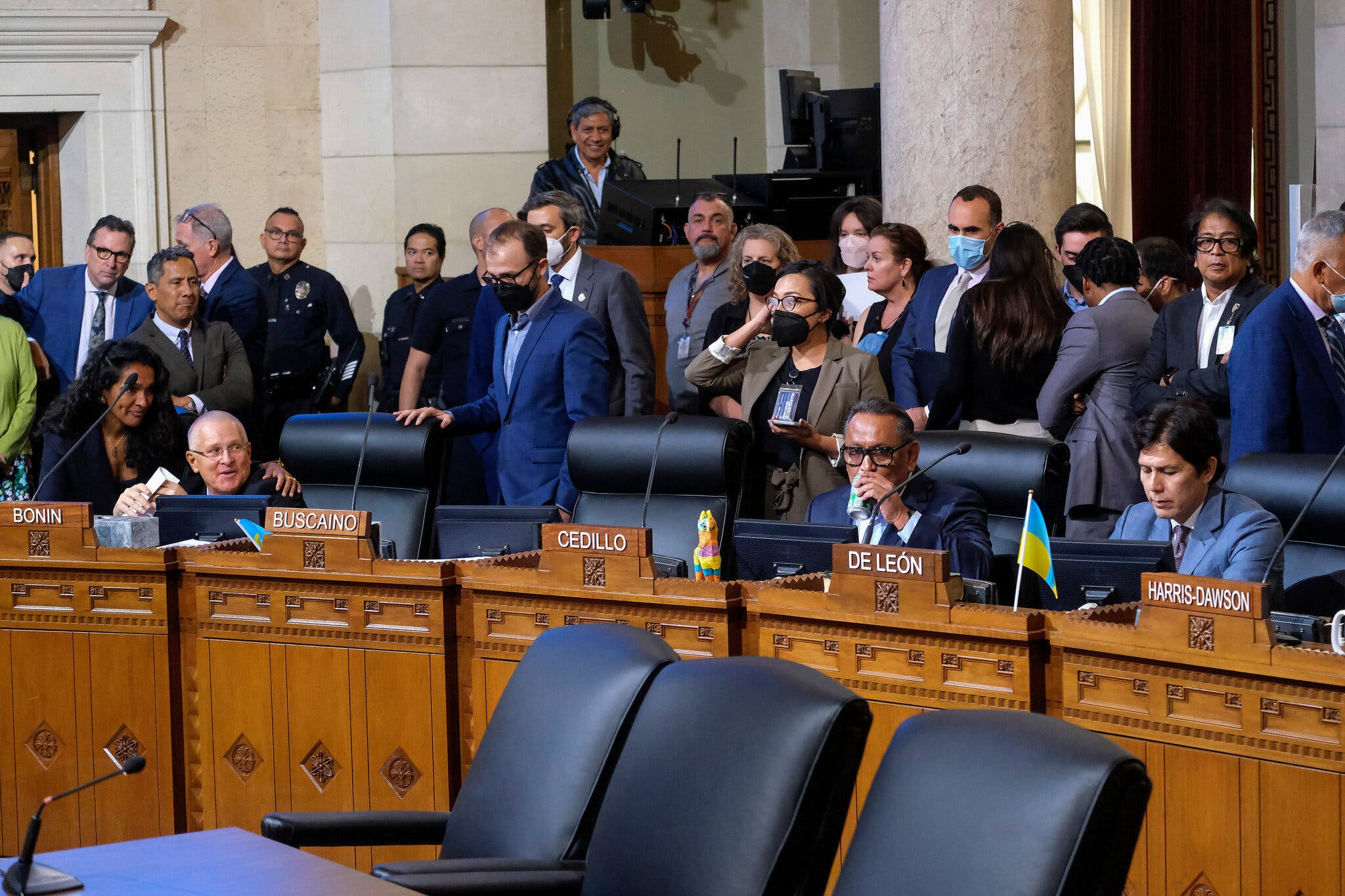The Los Angeles City Council has been rocked by a series of scandals. Most recently, an audio recording emerged of City Council President Nury Martinez making racist remarks in a conversation with two of her City Council colleagues and a local labor leader. Three LA City Council members have faced corruption scandals in the past three years, with former Council Member Mark Englander sentenced to federal prison and two others set to go to trial.
California Attorney General Rob Bonta announced earlier this month that his office would investigate LA’s redistricting process after the release of the leaked tape, which also captured City Council members discussing drawing districts that would benefit them electorally. The rot emerging from the city’s government is a consequence of unfair, biased, and opaque redistricting processes at the local level. Local level gerrymandering—whether it be city council or county commission districts—contributes to corruption and deserves more discussion vis-à-vis gerrymandering at the state and federal level.
Corruption, defined as the abuse of entrusted power for private gain, takes a variety of forms at the local level. This private gain can be financial, as exhibited by former LA City Council member Jose Huizar, who allegedly received $500,000 in personal bribes from a developer in exchange for supporting his condominium project. Private gain can also be political, such as a lawmaker using their delegated powers to increase their chances of reelection through redistricting or currying campaign funds from deep-pocketed sources. The LA City Council shows that biased redistricting processes beget both forms of corruption.
Every 10 years, the LA City Council charter mandates the creation of a Redistricting Commission “to advise the Council on drawing of Council district lines.” Although nominally independent, the Commission mostly consists of individuals appointed by City Council members themselves. Furthermore, the map proposed by the Commission is subject to revision by the City Council itself. Politicians fight to include in their district “assets” or specific businesses and regions that enhance their political influence and fundraising ability. In a leaked recording, the three LA City Council members discussed including “assets” like airports in their respective districts. When local politicians retain the power to draw their districts, they often strengthen their ties with their chosen “assets.” This can result in personal kickbacks in the form of bribes from those representing those assets’ interests to lawmakers (as in the case of Jose Huizar) and political kickbacks in the form of campaign donations and endorsements from associated PACs.
Similarly, redistricting designed to marginalize certain voting blocs also fosters corruption. One of the more notable elements of the leaked tape was the city councilmembers’ emphasis on including and excluding specific voter blocs in each district. For example, former City Council President Nury Martinez discussed keeping Los Angeles’ Korean “K-Town” neighborhood out of one of her colleague’s districts for fear of creating a “renters’” district, presumably because increasing the political power of the city’s renters would pose a threat to the interests of the California Association of Realtors—the second-largest donor to the state’s Democratic Party.
Martinez’s effort to suppress the influence of renters on the City Council exemplifies how biased redistricting processes can favor some groups over others. At a federal or state level, these groups are usually the major political parties themselves. In cities, where Democratic one-party rule is common, these groups are often parochial—Blacks versus Hispanics, homeowners versus renters, and so on. When representatives can create districts where a bloc favorable to them has a majority, they can effectively guarantee their reelection by only representing that bloc’s interests. Making matters worse, a study from MIT finds that this corrupt form of “voter ethnicization” results in low-caliber representation for citizens. The mechanism? In artificially safe districts, politicians are less compelled to respond quickly and efficiently to the needs of their constituency—especially those of the minority bloc that does not support them electorally. When lawmakers draw their own districts to include certain voter blocs over others, they leverage their power to secure reelection. As a result, the quality of representation suffers.
Redistricting debates usually focus on state or federal-level gerrymandering. Indeed, scores of US House and state legislature districts are brazenly drawn to favor one party over the other. Some states have created policies to end this practice: In California, redistricting for congressional and state legislative districts is carried out by a nonpartisan commission. Yet California redistricting for local governments, like the Los Angeles City Council, is done by local lawmakers. Unfair redistricting processes deserve equal scrutiny at all levels of government.
The pernicious effects of gerrymandering on local governance reverberate because local governments and the services they deliver matter. City and municipal governments’ responsibilities include police department funding, education funding, and all sorts of local infrastructure projects—items that strongly affect people’s everyday lives. When the quality of representation is compromised, it jeopardizes the quality of those services and public goods. The rot that has engulfed the Los Angeles City Council illuminates the importance of fair redistricting processes in local government.
